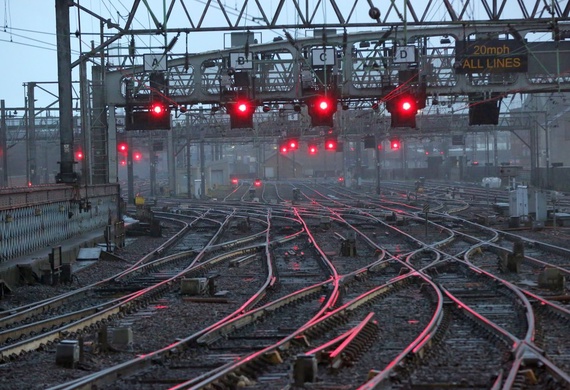Measuring Time Signal at Red on the South Western Mainline
Testing a new metric for estimating capacity utilisation and quality of operations
Network Rail has proposed to use the “Time Signal at Red” (TSAR) as a KPI to measure the quality of operations.
The TSAR in real operations is currently being estimated by NR based on the log of the interlocking systems. These data guarantee that the KPI is estimated with very high accuracy; however, it is currently impossible to test explicitly the impact on it of scenarios such as a professional driving policies, train length, or timetable changes. To make this metric usable for ex-ante testing of alternative scenarios, trenolab has implemented in trenissimo a set of functions to estimate the TSAR as an additional output of the normal simulation functions. This study contains is the first application of these new functions to a real and important line section: the Woking-Waterloo section of the South Western Main Line.
The study was included five types of analysis:
- Time at red of any signal considering all possible sequences of aspects.
- Theoretical minimum time at red.
- Minimum time at red in the most favorable conditions.
- Minimum time at red under realistic conditions
- Sensitivity of time at red towards the variation of multiple parameters.
This last set of simulations was run using another dedicated function in trenissimo, which allows runnning all combinations of a set of parameters defined by the user in a script file. These were:
- The length of the trainset (normal vs extended by 1 unit)
- The input delays: taken from real data considering all days in the analysis period vs just the 20% best days
- The Driving Policies: Professional Driving Policies vs normal driving profile
- Driver performances: Deterministic vs Stochastic driver behavior
- Braking performance: A more aggressive braking behavior vs a more conservative one
Totalling 2^5 = 32 scenarios, each repeated for 250 runs.
In all these tests the TSAR demonstrated its potential as a new KPI, in particular thanks to its relative independence from a specific timetable. Additionally, the results of a comparison with the same metric estimated using the log of the interlocking system demonstrated the high accuracy of the outcomes of trenissimo simulations.
Our tasks:
- Operations analysis
- Microscopic stochastic simulation
- Microscopic simulation model calibration
- 2020/05 - 2020/08
- UK
- Network Rail
- Research
- TRENOplus, trenissimo

